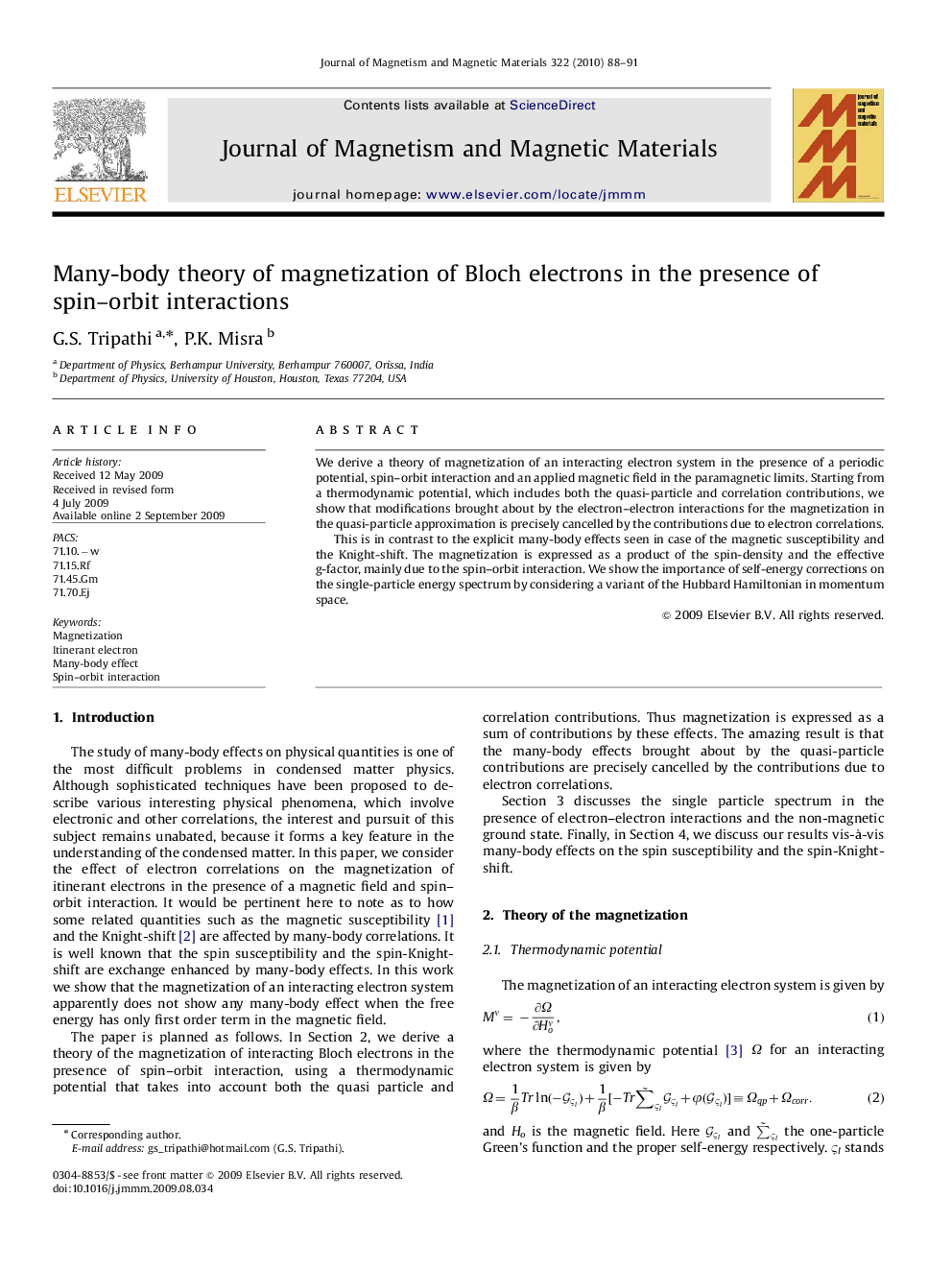| Article ID | Journal | Published Year | Pages | File Type |
|---|---|---|---|---|
| 1800922 | Journal of Magnetism and Magnetic Materials | 2010 | 4 Pages |
We derive a theory of magnetization of an interacting electron system in the presence of a periodic potential, spin–orbit interaction and an applied magnetic field in the paramagnetic limits. Starting from a thermodynamic potential, which includes both the quasi-particle and correlation contributions, we show that modifications brought about by the electron–electron interactions for the magnetization in the quasi-particle approximation is precisely cancelled by the contributions due to electron correlations.This is in contrast to the explicit many-body effects seen in case of the magnetic susceptibility and the Knight-shift. The magnetization is expressed as a product of the spin-density and the effective g-factor, mainly due to the spin–orbit interaction. We show the importance of self-energy corrections on the single-particle energy spectrum by considering a variant of the Hubbard Hamiltonian in momentum space.
